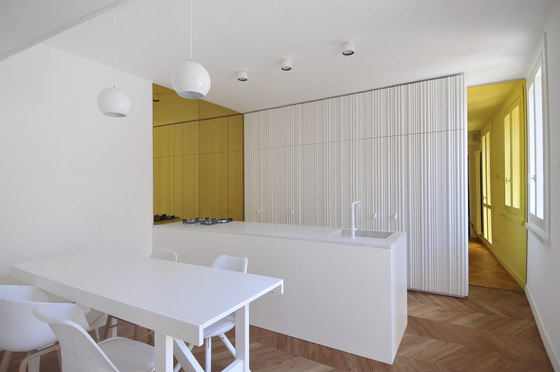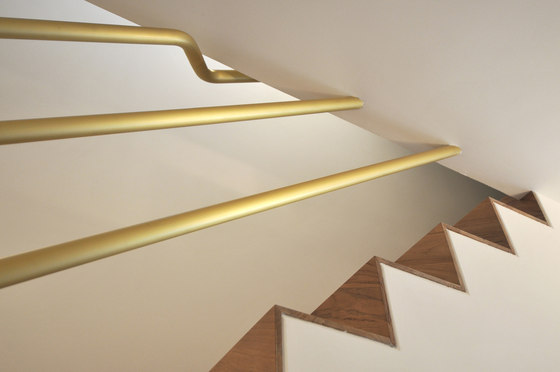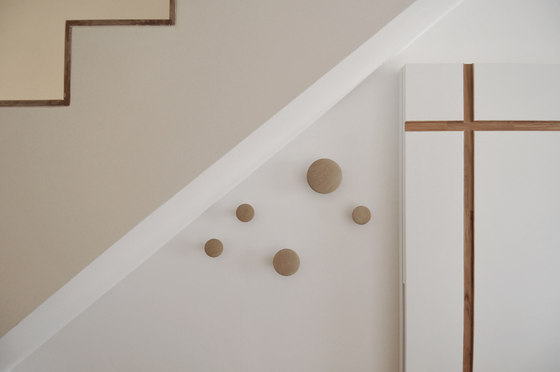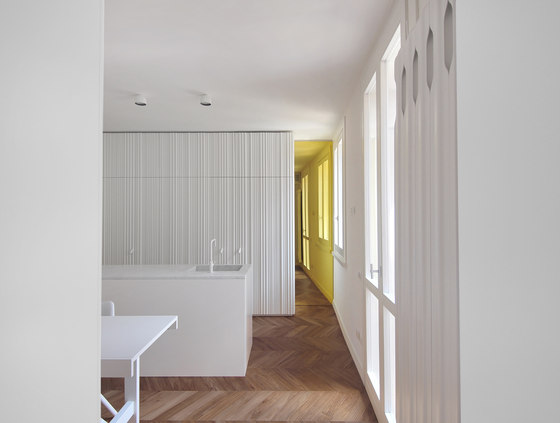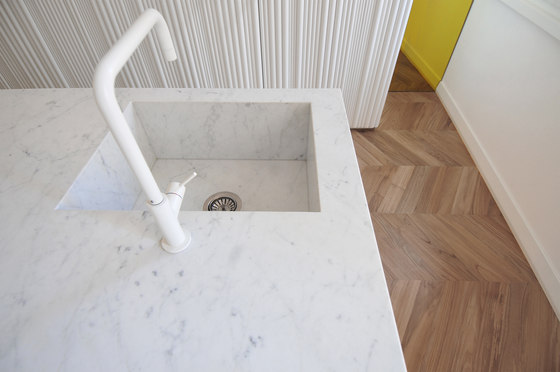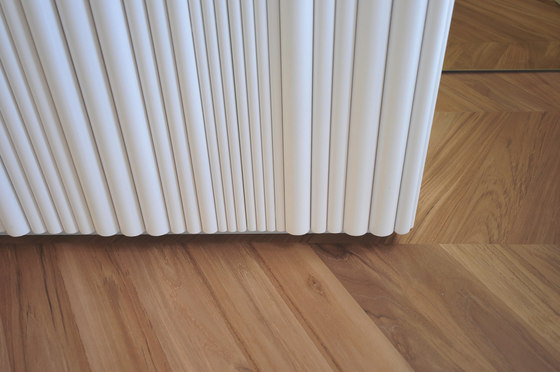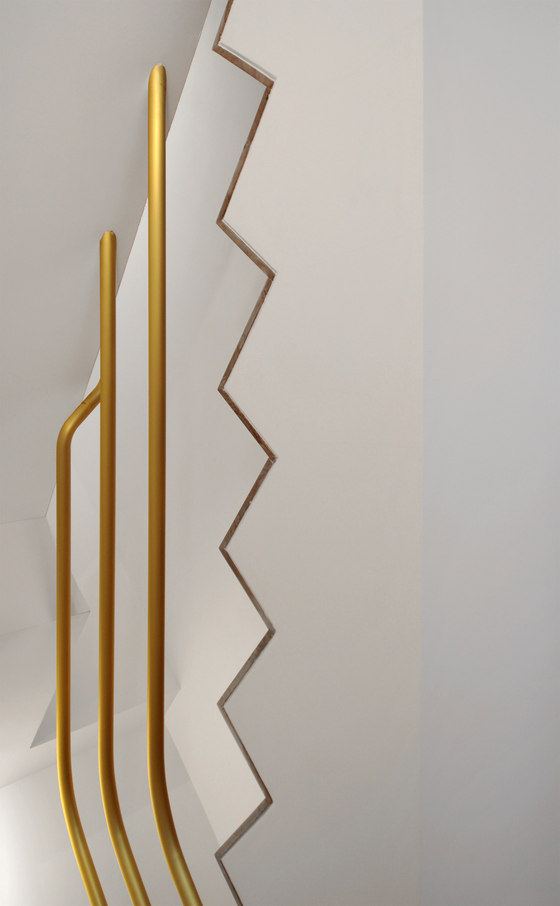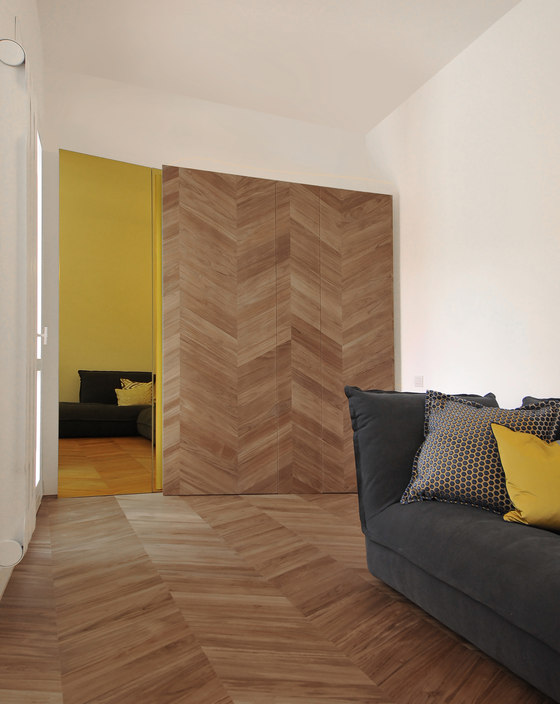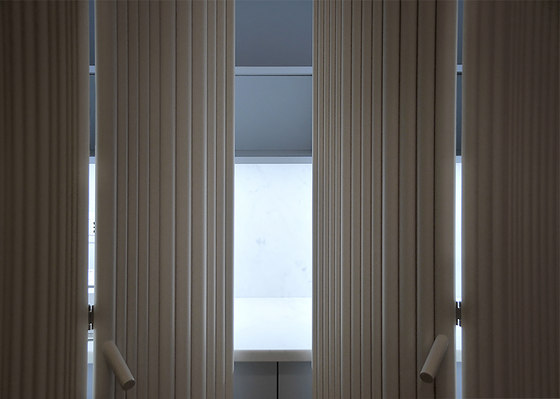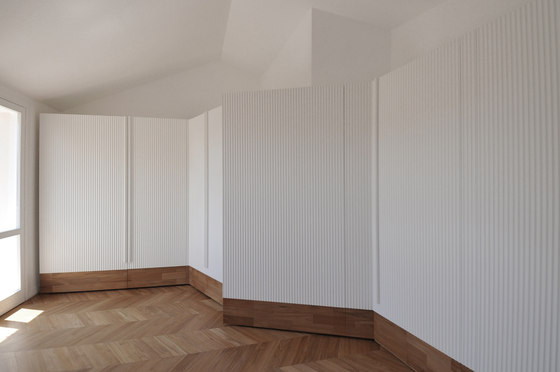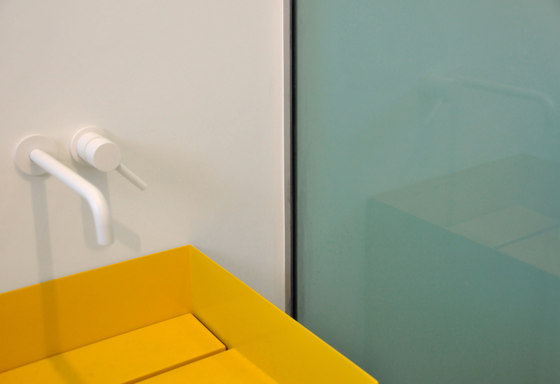The flat is located in the heart of Cesena's historical centre (Italy), a privileged position which allows the visual contemplation of an outstanding urban and natural landscape. The former abandonment and state of degradation of the house, accompanied by interior fragmentation and claustrophobic organization, neutralized the potential of the place.
The non-structural partitions were demolished to permit an overall reduction of rooms that achieves increased size, comfort and fluidity in sequence. Redefinition of the external openings intensified natural ventilation and sunlight entering the apartment, as they invariably face either towards the courtyard or to the terraces present on two levels.
On entrance level you find the kitchen/dining room, the living room and a guest bathroom. The recuperated and refurbished staircase leads to the upper level bedroom, private bathroom and technical room which complete the program required by the client. The decisive reduction of doors and corridors allows the place to benefit from a natural succession of spaces – this was made possible by the existing house morphology. The installed chevron-patterned teak floor, together with the white shade of the walls and ceilings, homogenize the lower and upper level, providing continuity. The terraces themselves are also covered in teak, albeit in a more linear pattern due to treatments necessary for external use. The decks thus become a privileged extension of the interior space.
The succession of the various environments gives life to a sequence of three elements: the golden yellow of the tinted mirrors and the brushed brass handrail, the pure white of the walls and furniture, and the natural wooden floor. It is this narrative rather than any other design choice that gives consistency to the intervention, just as “Ariadne's thread” unravels throughout the itinerary to mark and highlight the changes brought about by the renovation.
This intertwine of the three is expressed at its full potential in the kitchen. Not renouncing the well trusted arrangement for optimizing work space (peninsula with sink, stove and cabinets to the back), the project aims for an extreme composition. The “living wall” architecture, a composition of opening doors and sliding elements that shelter cabinets, shelves and appliances accurately responds to the typical kitchen functions by utilizing the available volume. Nothing is left to chance. What strikes you upon entering the kitchen is the rigor of the achieved order, softened by the sinuous qualities of bamboo, which actually becomes the protagonist in the composition. The tranquil succession of small white cylinders stands out next to the golden mirrors and surfaces that surround it and duplicate its presence. The tonality and geometry of the counter, the table and the lighting fixtures quietly participate in the synthesis complementing the strong presence of the bamboo cabinet system.
The never banal use of furnishment starts considering it not as the sum of added objects, which simply might occupy space kept free. On the contrary, if we consider it as a complementary component of the architectural design, which presuppose a certain permanence in time and requires a project brought to the detail, its potentialities unexpectedly amplify.
Under this point of view the furniture which concludes the main rooms was viewed as independent but integrated in the space and each of the piece unequivocally different even if related to the others. Their collocation at the “extremes” underline the single exceptions, a subtended mutual autonomy and the need for the punctual experimentation.
In all of the cases the texture, material, light, colour, and opening system are the principal component explored along the design phase.
The exposed surface, a steady background in the kitchen and in the living room, a more articulated envelope in the bedroom, reveals in its opening and decomposition secret rooms, spaces not-perceivable in advance, varying depths depending on the needs and constraints. The shutters rotate, slide, overlap according to the specific situation.
The external treatment adopted for all of the elements, entirely made in wooden structure, expresses the many possibilities offered by the same material when it goes trough different operations: in the kitchen wardrobe, cylinders of varying diameter made of lacquered wood are joined together following the panels module; in the living room is the same floor to bend on the vertical surface of the shutters, whereas in the bedroom is just the base for the wide white panels carved in a continuous lacquered fluting, a real counter-form of the dowels used in the kitchen.
tissellistudioarchitetti
